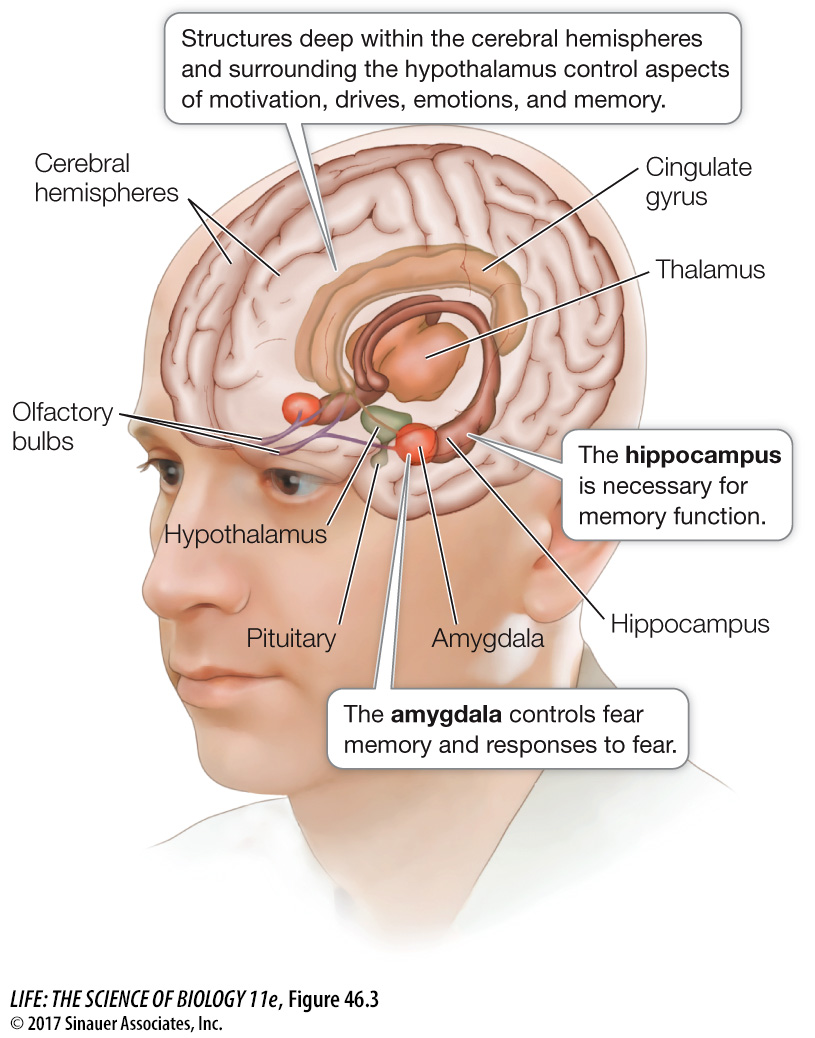The core of the forebrain controls physiological drives, instincts, and emotions
As mentioned above, the diencephalon consists of the thalamus and the hypothalamus. The thalamus communicates sensory information to the cerebral cortex; the hypothalamus receives information about physiological conditions in the body and regulates many homeostatic functions. Key Concept 39.5 describes how the hypothalamus is involved in regulating body temperature, and Key Concept 40.3 discusses the intimate association between the hypothalamus and the pituitary gland in the control of many homeostatic functions.
The forebrain of all vertebrates includes a phylogenetically old, complex set of structures called the limbic system (Figure 46.3). The limbic system is responsible for some basic instincts and drives such as hunger and thirst, sexual behavior, and emotions. Within the limbic system there are areas that, when stimulated with small electric currents, can cause intense sensations of pleasure, pain, or rage.

Pleasure and pain centers in the limbic system are believed to play roles in learning and in physiological drives. One component of the limbic system—